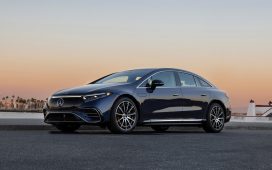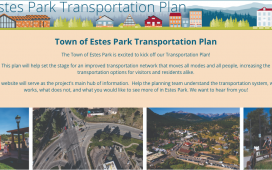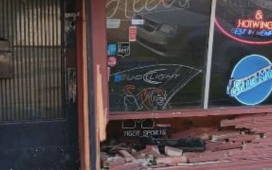Tesla has dominated the electric vehicle market in the United States for over a decade. In that span, the company has grown into a juggernaut that has moved beyond just cars, becoming a major player in the EV charging space. Tesla has also done partnerships with major brands like Toyota to create battery and electric drive systems for other automakers in order to proliferate electric cars around the world.
Despite this wild success, Tesla cars are not actually that reliable. They’re plagued with issues across many systems and basic problems down to things like panel fitting. Tesla focuses on getting cars to market rather than making sure the cars are perfect for consumers at release. This isn’t the most absurd concept in other industries, but in cars, it can mean serious problems for consumers. As such, Tesla is frequently issuing recalls. Tesla recently made a splash with news that its Cybertruck would undergo massive recalls. This is far from the first time Tesla has issued recalls. In fact, Tesla has had over 60 recalls in its history, and here’s a “breakdown” of every time Tesla models had to head back to their ground zero.
In order to give you the most up-to-date and accurate information possible, the data used to compile this article was sourced from NHTSA and Cars.com.
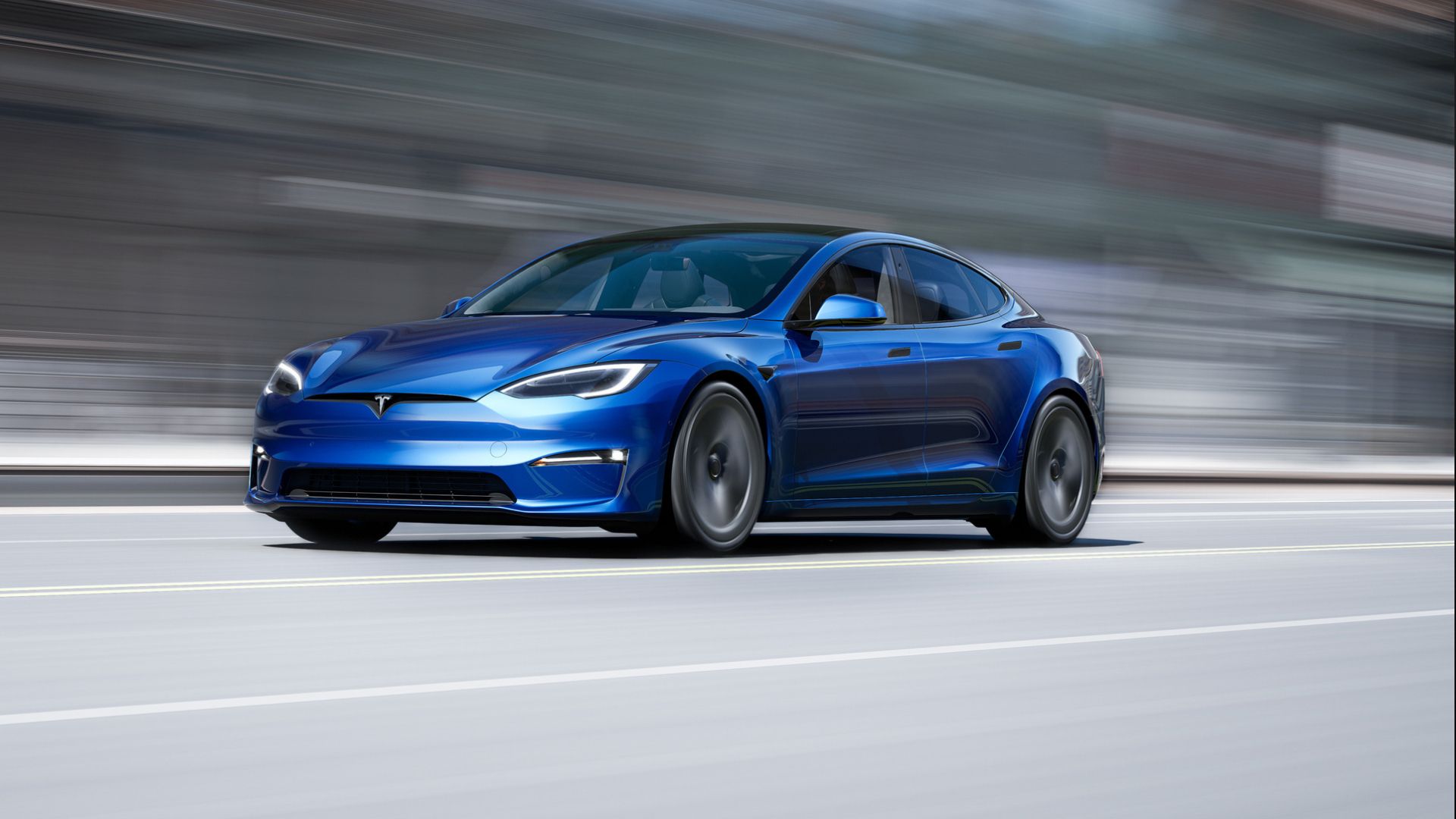
2024 Tesla Model S: A Comprehensive Guide On Features, Specs, And Pricing
The Model S has been around for a long time, but it is still one of the most competent EVs currently on sale. Here’s all you need to know about it.
Tesla Model S
The Model S is Tesla’s premiere EV offering. It is a stylish, luxury EV with among the best range in its class. The Model S has everything an EV owner could want. The badge brings some clout, and driving an electric vehicle will still be trendy for a few more years. The Model S is a smooth highway cruiser, and perfect for day-to-day activities. Unfortunately, it has had issues with almost every part of the car, resulting in a massive number of recalls, including three already this year.
The Model S Has Had A Whopping 32 Recalls
- February 2024: “A factory reset muted the Pedestrian Warning System (PWS) sounds. As such, these vehicles fail to comply with the requirements of Federal Motor Vehicle Safety Standard number 141, “Minimum Sound Requirements for Hybrid and Electric Vehicles.”
- January 2024: “An incorrect font size is displayed on the instrument panel for the Brake, Park, and Antilock Brake System (ABS) warning lights. As such, these vehicles fail to comply with the requirements of Federal Motor Vehicle Safety Standard number 105, “Hydraulic and Electric Brake Systems” and 135, “Light Vehicle Brake Systems.” ”
- January 2024: “Software instability may prevent the rearview camera image from displaying.”
- December 2023: “The cabin doors can be unlocked during a crash. As such, these vehicles fail to comply with the requirements of Federal Motor Vehicle Safety Standard number 214, “Side Impact Protection.” ”
- December 2023: “In certain circumstances when Autosteer is engaged, the prominence and scope of the feature’s controls may not be sufficient to prevent driver misuse of the SAE Level 2 advanced driver-assistance feature.”
- November 2023: “An incorrect air bag may have been installed when the steering yoke or round steering wheel was replaced with a different style of yoke or steering wheel.”
- July 2023: “The front-row seat belts may not be connected properly to the pretensioner anchors, which can cause the seat belts to detach.”
- July 2023: “The forward-facing camera may be misaligned, causing some of the active safety features such as emergency braking, forward collision warning, and lane assist to become unavailable without alerting the driver.”
- February 2023: “The FSD Beta system may allow the vehicle to act unsafe around intersections, such as traveling straight through an intersection while in a turn-only lane, entering a stop sign-controlled intersection without coming to a complete stop, or proceeding into an intersection during a steady yellow traffic signal without due caution. In addition, the system may respond insufficiently to changes in posted speed limits or not adequately account for the driver’s adjustment of the vehicle’s speed to exceed posted speed limits.”
- October 2022: “The electronic power assist steering (EPAS) system may experience a loss of power steering assist when driving on rough roads or after hitting a pothole.”
- September 2022: “The window automatic reversal system may not react correctly after detecting an obstruction. As such, these vehicles fail to comply with the requirements of Federal Motor Vehicle Safety Standard number 118, “Power-Operated Window Systems.” ”
- July 2022: “The front bumper carrier structure may alter the vehicle’s crash detection, causing the front passenger airbag to deploy incorrectly during certain low-speed crashes. As such, these vehicles fail to comply with the requirements of Federal Motor Vehicle Safety Standard number 208, “Occupant Crash Protection.” :
- May 2022: “The infotainment central processing unit (CPU) may overheat during the preparation or process of fast-charging, causing the CPU to lag or restart.”
- April 2022: “The Boombox function allows sounds to be played through an external speaker while the vehicle is in motion, which may obscure the Pedestrian Warning System (PWS) sounds. As such, these vehicles fail to comply with the requirements of Federal Motor Vehicle Safety Standard number 141, “Minimum Sound Requirements for Hybrid and Electric Vehicles.” ”
- March 2022: “The rearview image may not immediately display when the vehicle begins to reverse. As such, these vehicles fail to comply with the requirements of Federal Motor Vehicle Safety Standard number 111, “Rear Visibility.” ”
- February 2022: “The right or left side curtain airbag inflators may have been assembled incorrectly.”
- February 2022: “The Boombox function allows sounds to be played through an external speaker while the vehicle is in motion, which may obscure the Pedestrian Warning System (PWS) sounds. As such, these vehicles fail to comply with the requirements of Federal Motor Vehicle Safety Standard number 141, “Minimum Sound Requirements for Hybrid and Electric Vehicles.” ”
- February 2022: “A software error may cause a valve in the heat pump to open unintentionally and trap the refrigerant inside the evaporator, resulting in decreased defrosting performance. As such, these vehicles fail to comply with the requirements of Federal Motor Vehicle Safety Standard number 103, “Windshield Defrosting and Defogging Systems.” ”
- January 2022: “The audible chime may not activate when the vehicle starts and the driver has not buckled their seat belt. As such, these vehicles fail to comply with the requirements of Federal Motor Vehicle Safety Standard number 208, “Occupant Crash Protection.” ”
- January 2022: “The “rolling stop” functionality available as part of the Full Self-Driving (Beta) software may allow the vehicle to travel through an all-way stop intersection without first coming to a stop.”
- December 2021: “The front trunk latch assembly may be misaligned, preventing the secondary hood latch from engaging. As such, these vehicles fail to comply with the requirements of Federal Motor Vehicle Safety Standard number 113, “Hood Latch System.” ”
- November 2021: “The driver’s airbag cushion may tear during deployment.”
- October 2021: “A communication error may cause false forward-collision warning (FCW) or unexpected activation of the automatic emergency brake (AEB) system.”
- January 2021: “When the 8GB eMMC NAND flash memory device for the center display reaches lifetime wear, the eMMC controller will no longer be able to maintain the integrity of the filesystem, causing a failure in some of the center display functions.”
- January 2019: “In the event of a crash necessitating deployment of the passenger frontal airbag, these inflators may explode due to propellant degradation occurring after long-term exposure to absolute humidity and temperature cycling.”
- March 2018: “The aluminum bolts that attach the power steering gear assist motor to the gear housing may corrode and fracture causing a reduction or complete loss of power steering assist.”
- January 2018: “In the event of a crash necessitating deployment of the passenger frontal airbag, these inflators may explode due to propellant degradation occurring after long-term exposure to absolute humidity and temperature cycling.”
- April 2017: “The electric parking brake calipers have an internal gear that may be improperly manufactured, possibly resulting in the gear fracturing during parking brake application or release.”
- January 2017: “Vehicles are equipped with certain air bag inflators assembled as part of the passenger frontal air bag modules used as original equipment or replacement equipment. In the event of a crash necessitating deployment of the frontal airbags, these inflators may rupture due to propellant degradation occurring after long-term exposure to absolute humidity and temperature cycling.”
- November 2015: “The affected vehicles are equipped with driver or front passenger seat belts that may be improperly connected to the outboard lap pretensioner.”
- June 2013: “An improper method for aligning the left-hand seat back striker to the bracket may have weakened the weld between the bracket and the frame of the vehicle.”
It’s alarming that there has essentially been a monthly recall since the end of 2021. A lot of these are crucial pieces of the vehicle too like airbags and seatbelts. It’s clear Tesla had superior build quality in the past when it sold fewer cars, as there were multi-year gaps in recalls in the mid-2010s.
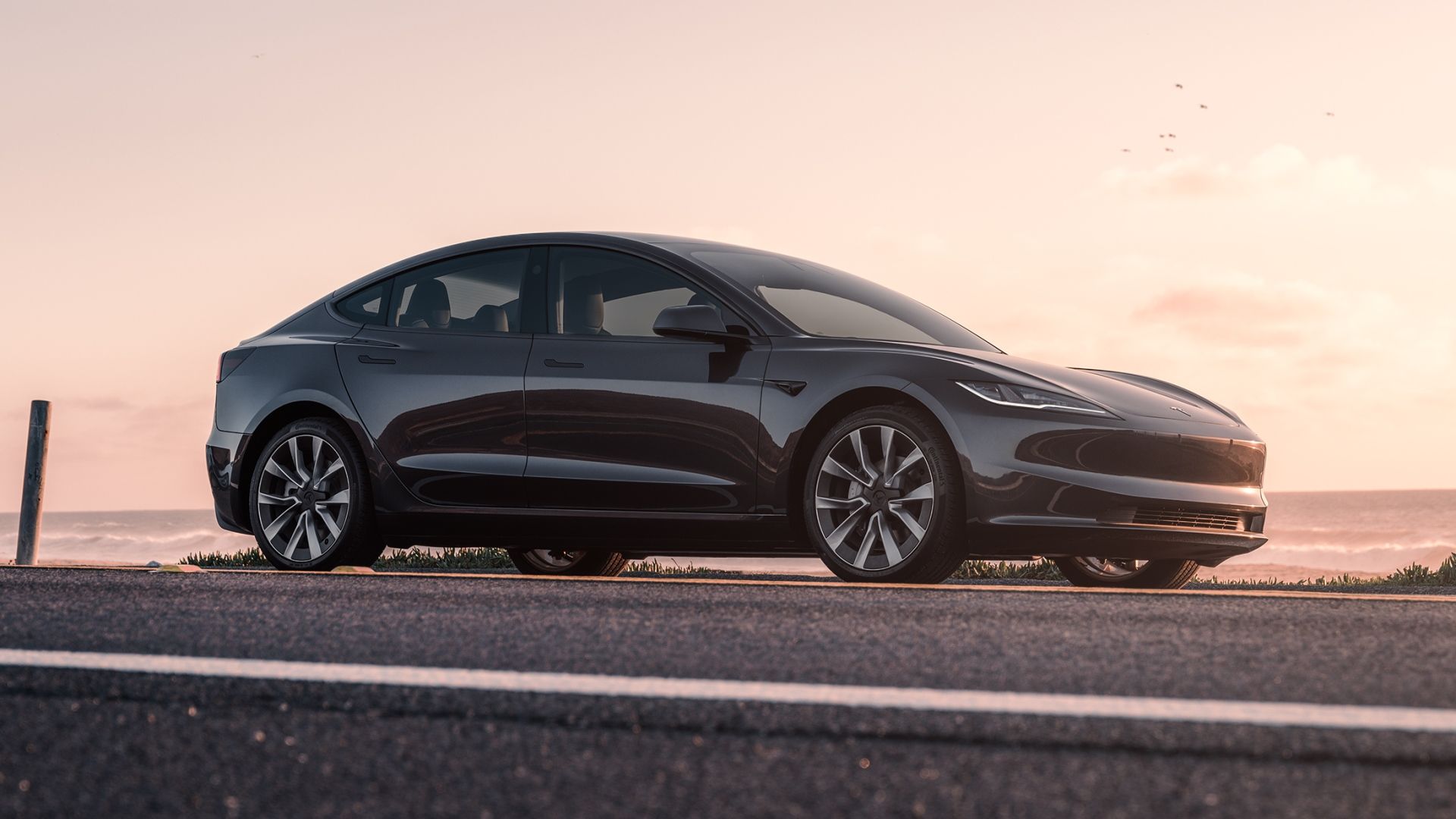
2024 Tesla Model 3 Highland: A Comprehensive Guide On Features, Specs, And Pricing
Tesla’s highly anticipated Model 3 Highland update is finally here. This is everything you need to know before buying one.
Tesla Model 3
The Model 3 is Tesla’s less expensive option. Giving the opportunity for many to experience electric luxury. It even has a performance pack for those who like a little more sport in their sedan. However, like its big brother, it is not without problems that have resulted in recalls.
The Budget Tesla Has Some Recall Issues
Here’s a list of Model 3 recalls.
- February 2024: “A factory reset muted the Pedestrian Warning System (PWS) sounds. As such, these vehicles fail to comply with the requirements of Federal Motor Vehicle Safety Standard number 141, “Minimum Sound Requirements for Hybrid and Electric Vehicles.” ”
- January 2024: “An incorrect font size is displayed on the instrument panel for the Brake, Park, and Antilock Brake System (ABS) warning lights. As such, these vehicles fail to comply with the requirements of Federal Motor Vehicle Safety Standard number 105, “Hydraulic and Electric Brake Systems” and 135, “Light Vehicle Brake Systems.”
- December 2023: “In certain circumstances when Autosteer is engaged, the prominence and scope of the feature’s controls may not be sufficient to prevent driver misuse of the SAE Level 2 advanced driver-assistance feature.”
- June 2023: “The pyrotechnic battery disconnect may be defective.”
- March 2023: “The front suspension lateral link fasteners may loosen, allowing the lateral link to separate from the sub-frame.”
- February 2023: “The FSD Beta system may allow the vehicle to act unsafe around intersections, such as traveling straight through an intersection while in a turn-only lane, entering a stop sign-controlled intersection without coming to a complete stop, or proceeding into an intersection during a steady yellow traffic signal without due caution. In addition, the system may respond insufficiently to changes in posted speed limits or not adequately account for the driver’s adjustment of the vehicle’s speed to exceed posted speed limits.”
- November 2022: “One or both taillights may intermittently fail to illuminate.”
- October 2022: “The second-row left seat belt buckle and second-row center seat belt anchor may have been incorrectly reassembled during vehicle service.”
- September 2022: “The window automatic reversal system may not react correctly after detecting an obstruction. As such, these vehicles fail to comply with the requirements of Federal Motor Vehicle Safety Standard number 118, “Power-Operated Window Systems.” ”
- May 2022: “The fisheye and narrow camera cable terminals were incorrectly installed in the cable harness connector, resulting in swapped camera views.”
- May 2022: “The infotainment central processing unit (CPU) may overheat during the preparation or process of fast-charging, causing the CPU to lag or restart.”
- April 2022: “The unit of speed (mph or km/h) may fail to display on the speedometer while in Track Mode. As such, these vehicles fail to comply with the requirements of Federal Motor Vehicle Safety Standard number 101, “Control and Displays.” ”
- April 2022: ” The Boombox function allows sounds to be played through an external speaker while the vehicle is in motion, which may obscure the Pedestrian Warning System (PWS) sounds. As such, these vehicles fail to comply with the requirements of Federal Motor Vehicle Safety Standard number 141, “Minimum Sound Requirements for Hybrid and Electric Vehicles.” ”
- March 2022: ” The rearview image may not immediately display when the vehicle begins to reverse. As such, these vehicles fail to comply with the requirements of Federal Motor Vehicle Safety Standard number 111, “Rear Visibility.” ”
- February 2022: “The Boombox function allows sounds to be played through an external speaker while the vehicle is in motion, which may obscure the Pedestrian Warning System (PWS) sounds. As such, these vehicles fail to comply with the requirements of Federal Motor Vehicle Safety Standard number 141, “Minimum Sound Requirements for Hybrid and Electric Vehicles.” ”
- February 2022: “A software error may cause a valve in the heat pump to open unintentionally and trap the refrigerant inside the evaporator, resulting in decreased defrosting performance. As such, these vehicles fail to comply with the requirements of Federal Motor Vehicle Safety Standard number 103, “Windshield Defrosting and Defogging Systems.” ”
- January 2022: “The audible chime may not activate when the vehicle starts and the driver has not buckled their seat belt. As such, these vehicles fail to comply with the requirements of Federal Motor Vehicle Safety Standard number 208, “Occupant Crash Protection.” ”
- January 2022: “The “rolling stop” functionality available as part of the Full Self-Driving (Beta) software may allow the vehicle to travel through an all-way stop intersection without first coming to a stop.”
- December 2021: ” The rearview camera cable harness may be damaged by the opening and closing of the trunk lid, preventing the rearview camera image from displaying.”
- October 2021: “A communication error may cause false forward-collision warning (FCW) or unexpected activation of the automatic emergency brake (AEB) system.”
- October 2021: “The front suspension lateral link fasteners may loosen, allowing the lateral link to separate from the sub-frame.”
- October 2021: “The left and/or right side curtain air bag may have been improperly secured to the roof rail, which could result in a twisted airbag. As such, these vehicles fail to comply with the requirements of Federal Motor Vehicle Safety Standard numbers 214, “Side Impact Protection” and 226, “Ejection Mitigation.” ”
- May 2021: “One or both fasteners that secure the front seat shoulder belt to the b-pillar may not be properly attached.”
- May 2021: “The brake caliper bolts may be loose, allowing the brake caliper to separate and contact the wheel rim.”
- October 2019: “The driver-side sun visor may not have the required airbag warning information. As such, these vehicles fail to comply with the requirements of Federal Motor Vehicle Safety Standard (FMVSS) number 208, “Occupant Crash Protection.”
While the Model 3 has fewer recalls than the Model S, it also has been on the market for a significantly shorter amount of time, so it’s really a wash. Once again, it appears these repeated issues began to crop up in 2021.
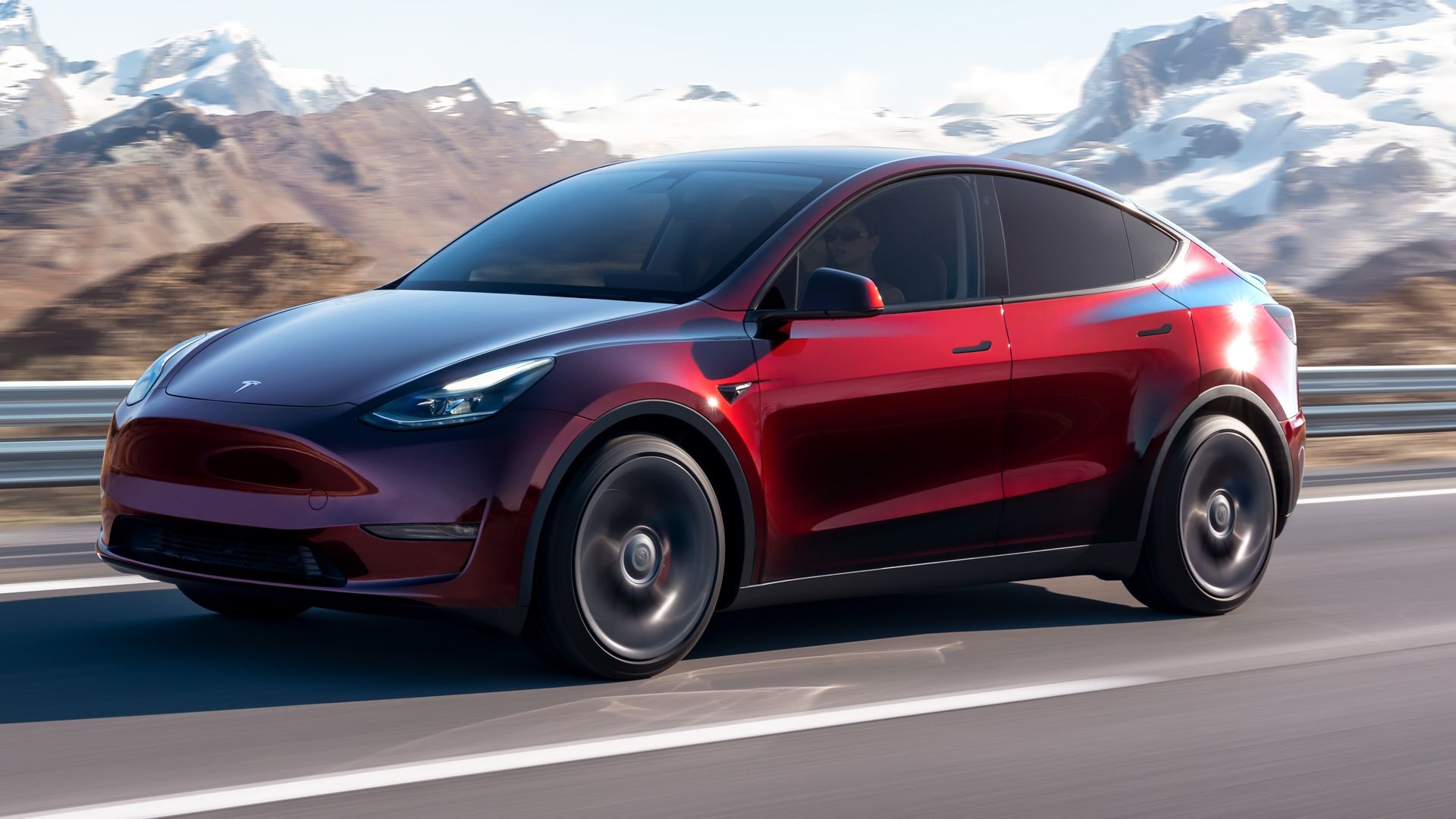
2024 Tesla Model Y: A Comprehensive Guide On Features, Specs, And Pricing
Dive into our comprehensive guide on the Tesla Model Y to make an informed decision on whether this is the EV crossover for you.
Tesla Model Y
The Model Y is Tesla’s small SUV offering, perfect for the crossover-obsessed public. It has among the best range in its class and offers a nice luxurious driving experience for those interested in zero-emission vehicles. Unfortunately, like the rest of its family, it’s had some serious trouble with recalls.
The Model Y Has Recently Had Some Software Issues
Here’s a list of Model Y recalls.
- February 2024: “A factory reset muted the Pedestrian Warning System (PWS) sounds. As such, these vehicles fail to comply with the requirements of Federal Motor Vehicle Safety Standard number 141, “Minimum Sound Requirements for Hybrid and Electric Vehicles.” ”
- January 2024: “Software instability may prevent the rearview camera image from displaying.”
- December 2023: “In certain circumstances when Autosteer is engaged, the prominence and scope of the feature’s controls may not be sufficient to prevent driver misuse of the SAE Level 2 advanced driver-assistance feature.”
- July 2023: “The forward-facing camera may be misaligned, causing some of the active safety features such as emergency braking, forward collision warning, and lane assist to become unavailable without alerting the driver.”
- June 2023: “The pyrotechnic battery disconnect may be defective”
- May 2023: “The steering wheel fastener may be loose.”
- February 2023: “The bolts securing the second-row seat back frames may not have been securely tightened.”
- February 2023: “The FSD Beta system may allow the vehicle to act unsafe around intersections, such as traveling straight through an intersection while in a turn-only lane, entering a stop sign-controlled intersection without coming to a complete stop, or proceeding into an intersection during a steady yellow traffic signal without due caution. In addition, the system may respond insufficiently to changes in posted speed limits or not adequately account for the driver’s adjustment of the vehicle’s speed to exceed posted speed limits.”
- December 2022: “The front suspension lateral link fasteners may not have been properly attached to the sub-frame.”
- November 2022: “One or both taillights may intermittently fail to illuminate.”
- September 2022: “The window automatic reversal system may not react correctly after detecting an obstruction. As such, these vehicles fail to comply with the requirements of Federal Motor Vehicle Safety Standard number 118, “Power-Operated Window Systems.”
- May 2022: “The fisheye and narrow camera cable terminals were incorrectly installed in the cable harness connector, resulting in swapped camera views.”
- May 2022: “The infotainment central processing unit (CPU) may overheat during the preparation or process of fast-charging, causing the CPU to lag or restart.”
- April 2022: “The Boombox function allows sounds to be played through an external speaker while the vehicle is in motion, which may obscure the Pedestrian Warning System (PWS) sounds. As such, these vehicles fail to comply with the requirements of Federal Motor Vehicle Safety Standard number 141, “Minimum Sound Requirements for Hybrid and Electric Vehicles.” ”
- February 2022: “The Boombox function allows sounds to be played through an external speaker while the vehicle is in motion, which may obscure the Pedestrian Warning System (PWS) sounds. As such, these vehicles fail to comply with the requirements of Federal Motor Vehicle Safety Standard number 141, “Minimum Sound Requirements for Hybrid and Electric Vehicles.” ”
- February 2022: “A software error may cause a valve in the heat pump to open unintentionally and trap the refrigerant inside the evaporator, resulting in decreased defrosting performance. As such, these vehicles fail to comply with the requirements of Federal Motor Vehicle Safety Standard number 103, “Windshield Defrosting and Defogging Systems.” ”
- January 2022: “The audible chime may not activate when the vehicle starts and the driver has not buckled their seat belt. As such, these vehicles fail to comply with the requirements of Federal Motor Vehicle Safety Standard number 208, “Occupant Crash Protection.” ”
- January 2022: “The “rolling stop” functionality available as part of the Full Self-Driving (Beta) software may allow the vehicle to travel through an all-way stop intersection without first coming to a stop.”
- November 2021: “The front and rear suspension knuckles may fracture, causing the suspension links to separate.”
- October 2021: “A communication error may cause false forward-collision warning (FCW) or unexpected activation of the automatic emergency brake (AEB) system.”
- October 2021: “The front suspension lateral link fasteners may loosen, allowing the lateral link to separate from the sub-frame.”
- May 2021: “One or both fasteners that secure the left and right second-row seat belt retractors may not be properly attached.”
- May 2021: “One or both fasteners that secure the front seat shoulder belt to the b-pillar may not be properly attached.”
- May 2021: “The brake caliper bolts may be loose, allowing the brake caliper to separate and contact the wheel rim.”
- November 2020: “The bolts connecting the front upper control arm and steering knuckle may have not been properly tightened, allowing the upper control arm to detach from the steering knuckle.
- September 2020: “A software error prevents the illumination of trailer brake lights. As such, these vehicles fail to comply with the requirements of Federal Motor Vehicle Safety Standard number 108, “Lamps, Reflective Devices, and Associated Equipment.” ”
The Model Y is a nice offering in its class, but like all Teslas it has some build quality issues that may result in some serious problems. Unintended breaking, failure to stop at intersections? Not exactly minor recalls. With over six recalls a year since its release, there is definitely a concern to be had when considering the purchase of a Model Y.
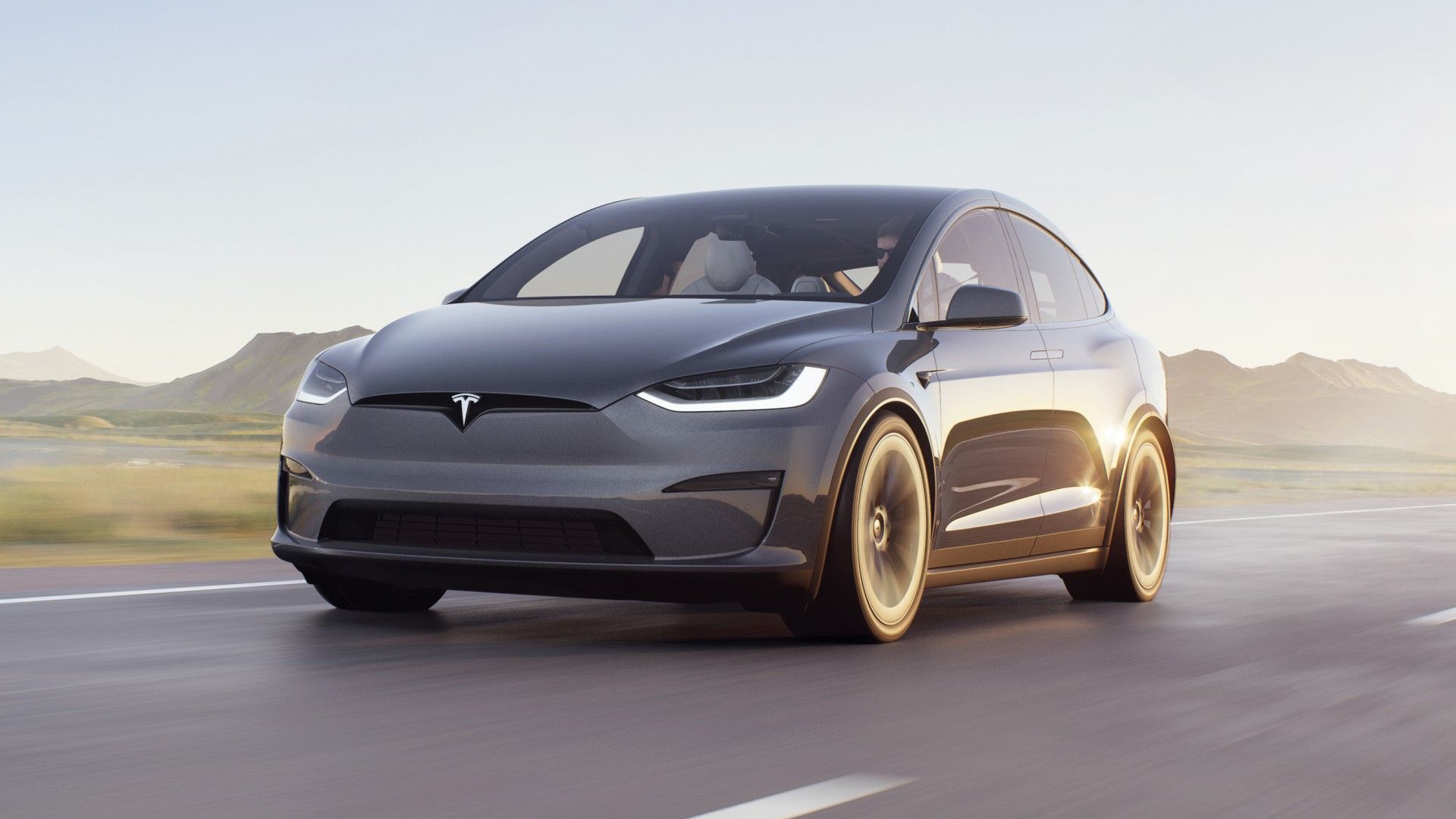
2024 Tesla Model X: A Comprehensive Guide On Features, Specs, And Pricing
The Tesla Model X enters 2024 with no substantial changes. Here’s everything you need to know before you buy one.
Tesla Model X
The Model X is the first electric SUV to make a splash in the US. It became an internet sensation with the Plaid version’s insane speed and 0-60 time. However, like all the other vehicle models from the brand, it’s had some serious problems.
Tesla’s Flagship Electric SUV Has Had 31 Recalls
Here’s a list of Model X Recalls.
- February 2024: “A factory reset muted the Pedestrian Warning System (PWS) sounds. As such, these vehicles fail to comply with the requirements of Federal Motor Vehicle Safety Standard number 141, “Minimum Sound Requirements for Hybrid and Electric Vehicles.”
- January 2024: “An incorrect font size is displayed on the instrument panel for the Brake, Park, and Antilock Brake System (ABS) warning lights. As such, these vehicles fail to comply with the requirements of Federal Motor Vehicle Safety Standard number 105, “Hydraulic and Electric Brake Systems” and 135, “Light Vehicle Brake Systems.” ”
- January 2024: “Software instability may prevent the rearview camera image from displaying.”
- December 2023: “The cabin doors can be unlocked during a crash. As such, these vehicles fail to comply with the requirements of Federal Motor Vehicle Safety Standard number 214, “Side Impact Protection.” ”
- December 2023: “In certain circumstances when Autosteer is engaged, the prominence and scope of the feature’s controls may not be sufficient to prevent driver misuse of the SAE Level 2 advanced driver-assistance feature.”
- November 2023: “An incorrect airbag may have been installed when the steering yoke or round steering wheel was replaced with a different style of yoke or steering wheel.”
- October 2023: “The vehicle controller may fail to detect low brake fluid and will not display a warning light. As such, these vehicles fail to comply with the requirements of Federal Motor Vehicle Safety Standard number 135, “Light Vehicle Brake Systems.” ”
- July 2023: “The forward-facing camera may be misaligned, causing some of the active safety features such as emergency braking, forward collision warning, and lane assist to become unavailable without alerting the driver.”
- July 2023: “The forward-facing camera may be misaligned, causing some of the active safety features such as emergency braking, forward collision warning, and lane assist to become unavailable without alerting the driver.”
- July 2023: “The front-row seat belts may not be connected properly to the pretensioner anchors, which can cause the seat belts to detach.”
- April 2023: “Weak camera signal strength may prevent the rearview image from displaying. As such, these vehicles fail to comply with the requirements of Federal Motor Vehicle Safety Standard number 111, “Rear Visibility.” ”
- February 2023: “The FSD Beta system may allow the vehicle to act unsafe around intersections, such as traveling straight through an intersection while in a turn-only lane, entering a stop sign-controlled intersection without coming to a complete stop, or proceeding into an intersection during a steady yellow traffic signal without due caution. In addition, the system may respond insufficiently to changes in posted speed limits or not adequately account for the driver’s adjustment of the vehicle’s speed to exceed posted speed limits.”
- November 2022: “The restraint control module (RCM) calibration may cause the front passenger airbag to deploy incorrectly during certain low-speed crashes. As such, these vehicles fail to comply with the requirements of Federal Motor Vehicle Safety Standard number 208, “Occupant Crash Protection.” ”
- October 2022: “The electronic power assist steering (EPAS) system may experience a loss of power steering assist when driving on rough roads or after hitting a pothole”
- September 2022: “The window automatic reversal system may not react correctly after detecting an obstruction. As such, these vehicles fail to comply with the requirements of Federal Motor Vehicle Safety Standard number 118, “Power-Operated Window Systems.”
- May 2022: “The infotainment central processing unit (CPU) may overheat during the preparation or process of fast-charging, causing the CPU to lag or restart.”
- April 2022: “The Boombox function allows sounds to be played through an external speaker while the vehicle is in motion, which may obscure the Pedestrian Warning System (PWS) sounds. As such, these vehicles fail to comply with the requirements of Federal Motor Vehicle Safety Standard number 141, “Minimum Sound Requirements for Hybrid and Electric Vehicles.”
- April 2022: “The left or right front-row side curtain airbags may not deploy as intended when the windows are lowered. As such, these vehicles fail to comply with the requirements of Federal Motor Vehicle Safety Standard number 226, “Ejection Mitigation.” ”
- March 2023: “The rearview image may not immediately display when the vehicle begins to reverse. As such, these vehicles fail to comply with the requirements of Federal Motor Vehicle Safety Standard number 111, “Rear Visibility.” ”
- February 2022: “The Boombox function allows sounds to be played through an external speaker while the vehicle is in motion, which may obscure the Pedestrian Warning System (PWS) sounds. As such, these vehicles fail to comply with the requirements of Federal Motor Vehicle Safety Standard number 141, “Minimum Sound Requirements for Hybrid and Electric Vehicles.” ”
- February 2022: “A software error may cause a valve in the heat pump to open unintentionally and trap the refrigerant inside the evaporator, resulting in decreased defrosting performance. As such, these vehicles fail to comply with the requirements of Federal Motor Vehicle Safety Standard number 103, “Windshield Defrosting and Defogging Systems.” ”
- January 2022: “The audible chime may not activate when the vehicle starts and the driver has not buckled their seat belt. As such, these vehicles fail to comply with the requirements of Federal Motor Vehicle Safety Standard number 208, “Occupant Crash Protection.” ”
- January 2022: “The “rolling stop” functionality available as part of the Full Self-Driving (Beta) software may allow the vehicle to travel through an all-way stop intersection without first coming to a stop.”
- November 2021: “The driver’s airbag cushion may tear during deployment.”
- October 2021: “A communication error may cause false forward-collision warning (FCW) or unexpected activation of the automatic emergency brake (AEB) system.”
- January 2021: “When the 8GB eMMC NAND flash memory device for the center display reaches lifetime wear, the eMMC controller will no longer be able to maintain the integrity of the filesystem, causing a failure in some of the center display functions.”
- November 2020: “The front and spine cosmetic roof trim may have been adhered to the vehicle without first using primer. As a result, one or both pieces of trim may separate from the vehicle while moving.”
- February 2020: “The aluminum bolts that attach the power steering gear assist motor to the gear housing may corrode and fracture causing a reduction or complete loss of power steering assist.”
- October 2017: “The left-side, second row, reclining seat backs may not fully latch due to having incorrectly adjusted recliner mechanism cables. As such, these vehicles fail to comply with the requirements of Federal Motor Vehicle Safety Standard (FMVSS) number 207, “Seating Systems,” and 210, “Seat Belt Assembly Anchorages.” ”
- April 2017: “The electric parking brake calipers have an internal gear that may be improperly manufactured, possibly resulting in the gear fracturing during parking brake application or release.”
- April 2016: “In the affected vehicles, the third-row seat back may move forward under load such as in a frontal collision. As such, the vehicles do not conform to Federal Motor Vehicle Safety Standard (FMVSS) number 207, “Seating Systems.” ”
Once again, we see a gulf between the quality of more recent models and those closer to the original release of the Model X. Over 30 recalls is a huge number, especially with 25 of them coming in the last three years.
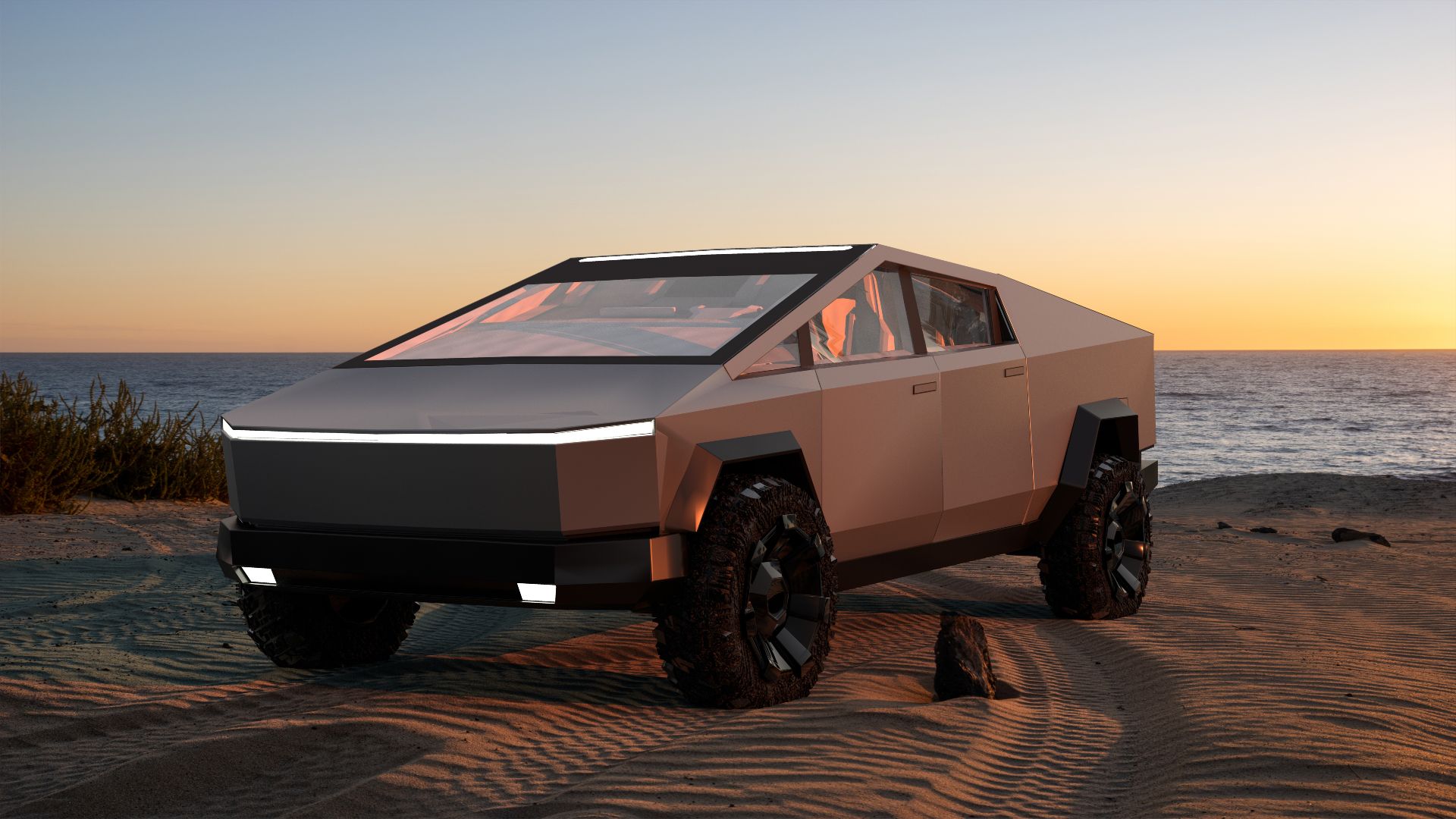
2024 Tesla Cybertruck: A Comprehensive Guide On Features, Specs, And Pricing
The Tesla Cybertruck is one of the most polarizing EVs in history, and this is everything you need to know about the all-electric pickup truck.
Tesla Cybertruck
The Cybertruck was one of the hottest EV concepts when it came on the scene. It remained one of the most anticipated cars of the last few years. However, it experienced a number of setbacks in its release and came out over two years after it was originally slated to. Now the Cybertruck is out, well sort of. It has immediately faced an issue that will require a replacement on every truck it’s released.
The Cybertruck Just Had Every Single Vehicle Recalled
Tesla has recalled over 3,500 released Cybertrucks due to an accelerator issue. Apparently, during production, the accelerator pads had come in contact with soap, yes, soap, which now leaves a vulnerability with the accelerator becoming stuck. Drivers accelerating without intention in a multi-ton truck is terrifying. It’s even more terrifying when you learn that the Cybertruck is likely not actually particularly safe.
Tesla is also stopping the production of all new Cybertrucks for the foreseeable future until it solves the problem. It’s more than a bit concerning that the Cybertruck took multiple years of additional time to release and then had a total recall in its first few months. We don’t know what will happen with the Cybertruck, but right now, it’s surprising that Tesla’s stock has only gone up in the past few weeks.
As with all Teslas build quality appears to be at an all-time low. While the brand has a lot of cache in the public, right now may not be the best time to purchase a new Tesla. We hope that it can get its issues sorted out, and be the shining hope of an EV future that it once appeared to be.




